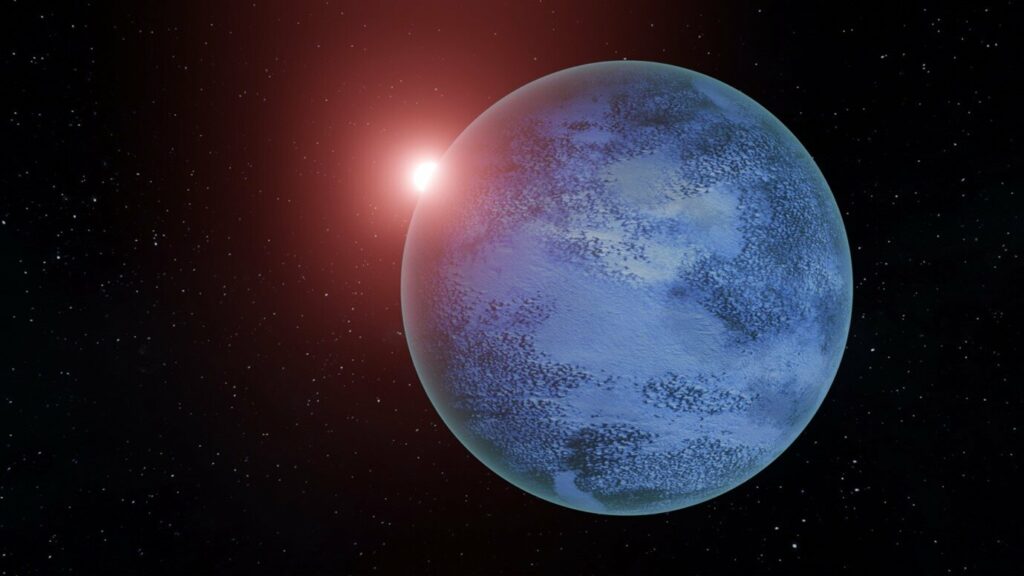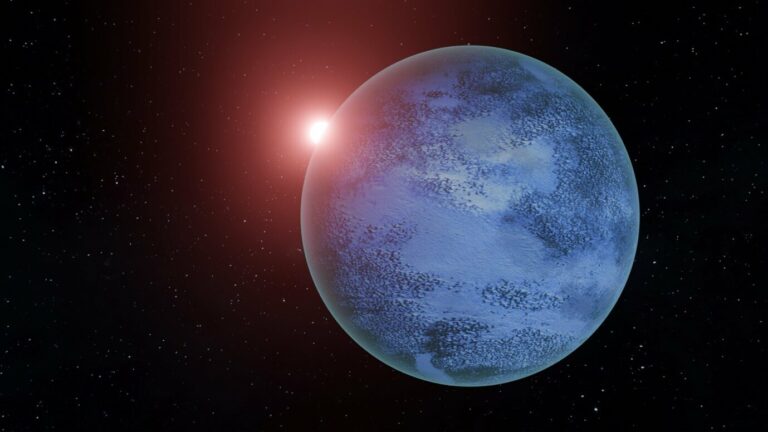Enhanced Probability of Discovering Water on Exoplanets Multiplied by 100
A recent analysis reveals that the presence of Earth-like exoplanets with liquid water is much more abundant than previously believed, significantly increasing the prospects of finding extraterrestrial life. The study indicates that even when surface conditions may not support liquid water, many stars could host geological conditions conducive to sub-surface liquid water.
Lead researcher Dr. Lujendra Ojha from Rutgers University in New Jersey, USA, presented the findings at the Goldschmidt geochemistry conference in Lyon. Dr. Ojha explained, “Liquid water is a crucial ingredient for life, and our research demonstrates that water can exist in unexpected locations, broadening the potential for environments where life could theoretically thrive.”

The research team identified two primary mechanisms by which sufficient heat could be generated to keep water in a liquid state underground, even if the planet’s surface is frozen. Dr. Ojha clarified, “Currently, Earth benefits from an optimal level of greenhouse gases in our atmosphere that stabilize surface liquid water. However, if Earth were to lose these greenhouse gases, the average global surface temperature would drop to around -18°C, causing most surface water to freeze.”
He further elaborated, “Yet, this doesn’t mean water would be completely solid everywhere. Deep within the Earth, heat from radioactivity can maintain liquid water. Today, we observe this phenomenon in regions like Antarctica and the Canadian Arctic, where substantial underground lakes of liquid water persist despite frigid temperatures, sustained by the heat generated from radioactivity. There is even evidence suggesting similar conditions may exist presently at Mars’ South Pole.”
Dr. Ojha continued, “Moons within our own solar system, such as Europa and Enceladus, exhibit extensive sub-surface liquid water despite their frozen surfaces. The gravitational effects of the massive planets they orbit, such as Saturn and Jupiter, continually churn their interiors. This process, similar to our Moon’s tidal effects but much more pronounced, makes the moons of Jupiter and Saturn prime candidates for potential life within our solar system. Numerous upcoming missions have been planned to explore these celestial bodies.”
The analysis focused on planets orbiting M-dwarfs, the most prevalent type of star in the galaxy. M-dwarfs are smaller and colder than our sun, accounting for approximately 70% of stars in the Milky Way. Many of the rocky, Earth-like exoplanets discovered thus far have been found orbiting M-dwarfs.
“We modeled the viability of generating and sustaining liquid water on exoplanets around M-dwarfs by considering only the heat produced by the planets themselves. However, when we also accounted for the possibility of liquid water generated by radioactivity, it became evident that a significant proportion of these exoplanets could possess sufficient heat to support liquid water—far more than previously estimated,” stated Dr. Ojha.
“Prior to incorporating sub-surface water into our calculations, it was projected that approximately one rocky planet would have liquid water per 100 stars. However, our new model suggests that, under favorable conditions, this ratio could approach one planet per star. Thus, the likelihood of finding liquid water is now approximately 100 times higher than previously thought. Considering the Milky Way Galaxy alone contains around 100 billion stars, the odds of finding life elsewhere in the universe appear quite favorable.”
NASA’s Europa Clipper, scheduled for launch in 2024 and expected to reach Jupiter’s moon Europa by 2030, will mark the earliest mission to explore an “ice world” type moon.
In response to this development, Professor Abel Méndez, the Director of the Planetary Habitability Laboratory at the University of Puerto Rico in Arecibo, emphasized that the presence of oceans concealed beneath ice sheets expands the possibilities of habitable worlds within our galaxy. While Professor Méndez was not directly involved in the current study, he commented on the significance of detecting these potential habitats using future telescopes, which presents a notable challenge.
The work on which the presentation is based was published in the journal Nature Communications.
Do not forget to share your opinion with us to provide you with the best posts !




0 Comments